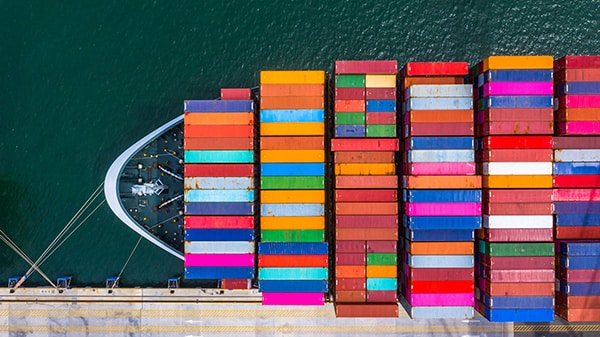How to Calculate Sea Freight Rates with FCL and LCL

What are Sea Freight Rates?
Sea freight rates are the costs it takes for cargo to be delivered from one destination to another by sea. Usually, this cost is influenced by the nature of the cargo, the weight or volume, the distance of the destination, and all of the other accumulated costs from other services.
In this short article we will cover how ocean freight rates are calculated for FCL and LCL. First, it is helpful to understand the two other major factors that contribute before container size affects final costs.

Full container loads (FCL) are optimal for shippers looking to export large loads or large items without an urgency on delivery. This allows shippers to take as much needed time possible to ensure their items arrive without damages.
Sea Freight Rates Breakdown
The two major costs that contribute to sea freight rates are:
- Charges set by carrier
- Costs that come from handling and clearing goods during loading and discharge
Another factor to these costs are the types of containers used in most sea freight. Much like ground transportation and LTL vs FTL, sea freights can be broken into full container load (FCL) or less-than container load (LCL).
FULL CONTAINER LOAD
Shipping lines charge a flat fee for their major container sizes. This includes 20’ containers, 40’ containers, and 40’ high cube containers. The amount they charge is dependent on many variables including where it’s coming from, where it’s going, volume, time of year, and many other factors.
Usually if a company does not have an ongoing contract with a shipping line or looking to move a very high volume, they should look for a freight forwarder. These types of agents will usually have access to a discounted rate based on certain travel volumes.
LESS-THAN CONTAINER LOAD
When someone does not have enough items to fill an entire shipping container, less-than container load is their best option. Not only is this a cost-effective option, but freight consolidation can allow companies to ship out more often if other deliveries are being carried out.
Sea freight LCL specialists normally run their services to all major ports and docks around the world. They carry this out by paying for a full container, announcing they consolidating multiple shipments at their warehouse, and charging a prorated rate per 1 cubic meter.
How are Rates Calculated?
Each freight rate is presented by a quotation. While these quotes will vary from forwarders to freight companies, the general costs are usually made up of the items below.
| Name | Description | FCL Charge Type | LCL Charge Type |
| Inland Haulage | Haulage from shipper to export warehouse or port of exit. | Lump Sum: Can include OR be subject to Fuel surcharge | Lump Sum: Can include OR be subject to Fuel surcharge |
| UK THC | Terminal handling charge – container handling at the port or consolidation warehouse | Lump Sum | Weight or Measure (W/M) Usually based on per 1000 kgs or 1.000 M3 whichever the greater. |
| Documentation | Admin charge for required shipping documentation. | Lump Sum: Can be multiple items for different documentation. I.e. Shipping line Bill of lading / House Bill of lading / certificates of origin etc. | Lump Sum: Can be multiple items for different documentation. I.e. Shipping line Bill of lading / House Bill of lading / certificates of origin etc. |
| Customs Clearance | Production and lodging of customs declaration. | Lump Sum | Lump Sum |
| Security | Surcharge for additional security measures usually imposed by the port. | Lump Sum | Lump sum |
| Ocean freight | Base rate for ocean freight. | Lump Sum Rates sold per size unit. I.e. 20′ cntr = $1000 40′ cntr = $2000 | Weight or Measure (W/M) Usually based on per 1000 kgs or 1.000 M3 whichever the greater. |
| BAF | Bunker adjustment factor – fuel surcharge for the ocean transport | Lump Sum Rates charged per size unit. I.e. 20′ cntr = $350 40′ cntr = $700 | Weight or Measure (W/M) Usually based on per 1000 kgs or 1.000 M3 whichever the greater. |
| CAF | Currency adjustment factor – hedging of currency exchange risk | Percentage of Freight Normally advised as percentage of freight rate. I.e. 20′ cntr = $1000 CAF @ 12% = $120 | Usually a percentage of the freight or sometimes W/M. This really comes down to how the freight forwarder choose to present it, often it will be shown as ‘inclusive’. |
The charges listed above are the core costs when shipping sea freight, but there may always be additional charges. Some forwarding agents may charge for tracking services, for utilizing third-party services not registered in their systems, and more.
